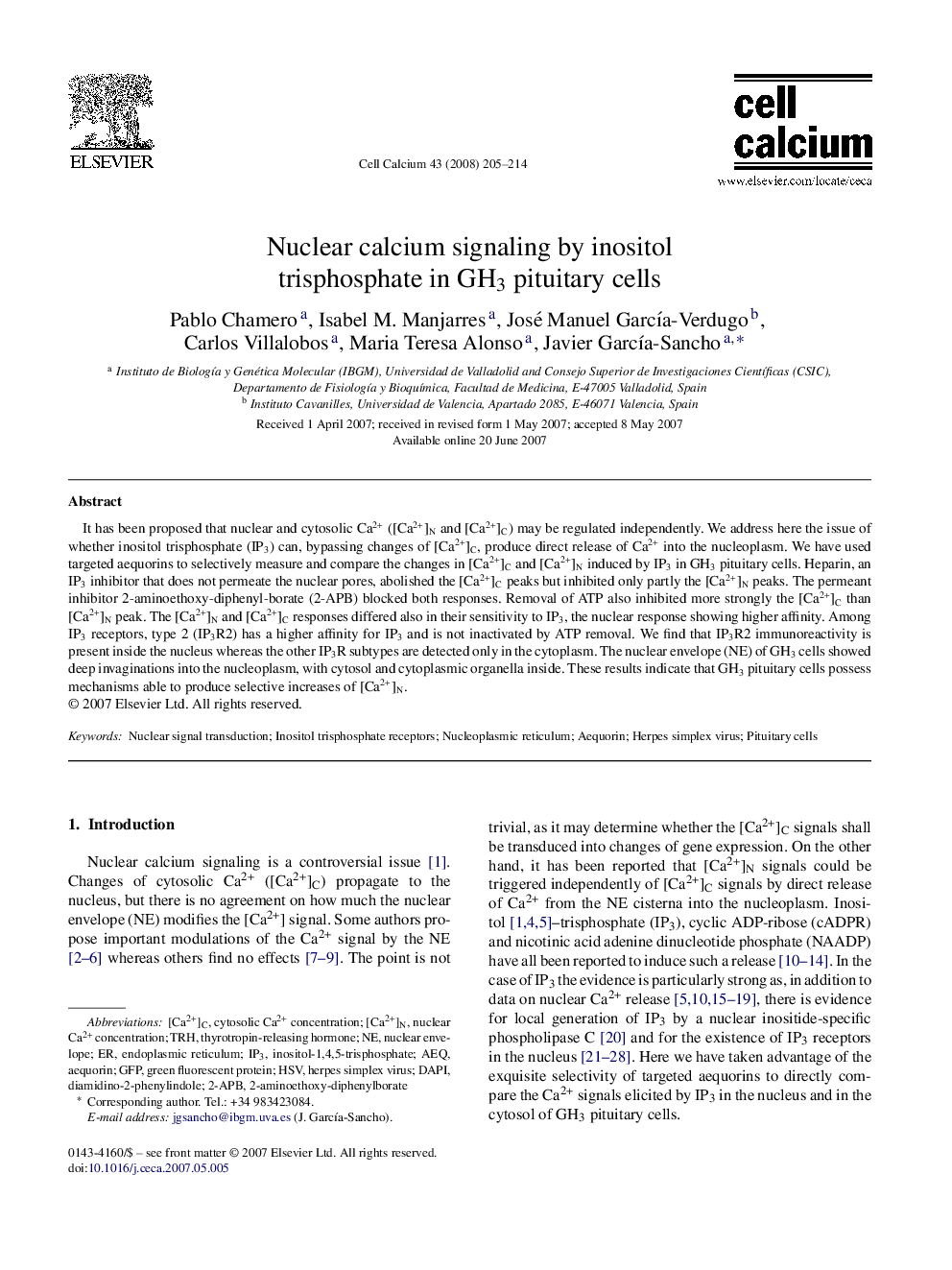| Article ID | Journal | Published Year | Pages | File Type |
|---|---|---|---|---|
| 10926486 | Cell Calcium | 2008 | 10 Pages |
Abstract
It has been proposed that nuclear and cytosolic Ca2+ ([Ca2+]N and [Ca2+]C) may be regulated independently. We address here the issue of whether inositol trisphosphate (IP3) can, bypassing changes of [Ca2+]C, produce direct release of Ca2+ into the nucleoplasm. We have used targeted aequorins to selectively measure and compare the changes in [Ca2+]C and [Ca2+]N induced by IP3 in GH3 pituitary cells. Heparin, an IP3 inhibitor that does not permeate the nuclear pores, abolished the [Ca2+]C peaks but inhibited only partly the [Ca2+]N peaks. The permeant inhibitor 2-aminoethoxy-diphenyl-borate (2-APB) blocked both responses. Removal of ATP also inhibited more strongly the [Ca2+]C than [Ca2+]N peak. The [Ca2+]N and [Ca2+]C responses differed also in their sensitivity to IP3, the nuclear response showing higher affinity. Among IP3 receptors, type 2 (IP3R2) has a higher affinity for IP3 and is not inactivated by ATP removal. We find that IP3R2 immunoreactivity is present inside the nucleus whereas the other IP3R subtypes are detected only in the cytoplasm. The nuclear envelope (NE) of GH3 cells showed deep invaginations into the nucleoplasm, with cytosol and cytoplasmic organella inside. These results indicate that GH3 pituitary cells possess mechanisms able to produce selective increases of [Ca2+]N.
Keywords
2-APBinositol trisphosphate receptorsAEqIP3HSVDAPIGFPinositol-1,4,5-trisphosphate[Ca2+]cAequorintrhdiamidino-2-phenylindolePituitary cellsendoplasmic reticulumNucleoplasmic reticulumCytosolic Ca2+ concentrationthyrotropin-releasing hormoneherpes simplex virusnuclear envelopegreen fluorescent protein
Related Topics
Life Sciences
Biochemistry, Genetics and Molecular Biology
Cell Biology
Authors
Pablo Chamero, Isabel M. Manjarres, José Manuel GarcÃa-Verdugo, Carlos Villalobos, Maria Teresa Alonso, Javier GarcÃa-Sancho,
